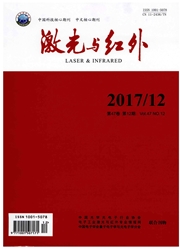

 中文摘要:
中文摘要:
为了让空间稳像系统在保证镜面精度的同时增加支撑强度,根据柔性支撑的设计理念,用消应力槽法对镜体支撑架进行柔性设计,用胶体粘结的方式在镜体与支架之间建立柔性连接。首次利用等效刚度法对平面型胶层进行精细有限元建模,推导了相应的等效刚度矩阵,并对装配后的镜面组件整体进行有限元建模和模态分析。模态分析的一阶谐振频率仿真结果为704.24Hz,与实物的检测结果693.5Hz相比只差了1.5%。由此可见,消应力槽法和等效刚度胶层建模法有效地完成了摆镜组件的柔性设计分析,能为类似光学设计工程中的柔性支撑设计分析提供参考。
 英文摘要:
英文摘要:
To make space image stabilization system ensure the accuracy of the tip/tih mirror and increase its support strength,a flexible support structure is designed using stress relief groove method, and a flexible connection between the mirror and its support is estat)lished using glue. The equivalent stiffness method is used to build fine finite element model for a planar - type layer. Meanwhile, equivalent stiffness matrix is deduced and calculated. The finite element model of tip/tilt mirror assembly is built, and then the modal analysis is done. The results show that the first resonance frequency is 704. 24 Hz. Comparing with the 693.5 Hz of real experimental results,the error is only 1.5%. This shows that the stress relief groove method and glue layer' s finite element modeling method can complete the design and a- nalysis of flexible tilt/tih nfirror effectively. Also it can provide a reference for similar optical projects in the flexible support design and analysis.
 同期刊论文项目
同期刊论文项目
 同项目期刊论文
同项目期刊论文
 期刊信息
期刊信息
